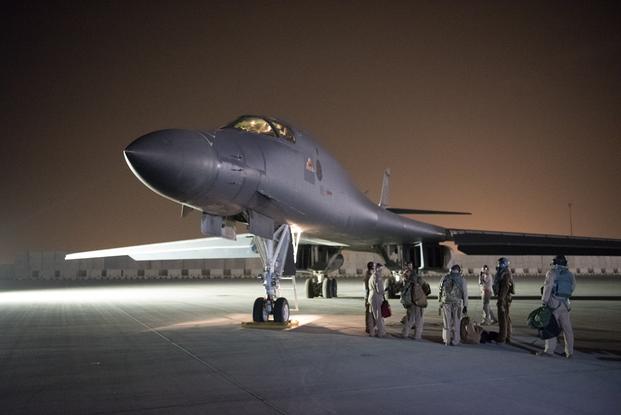Gen. Dawkins is the commander of 8th Air Force and Joint-Global Strike Operations Center.
The B-1 remains a combat-proven airframe capable of meeting today's combatant commanders' needs, and it will be a necessity as the Air Force modernizes its entire bomber force, including the B-21 Raider.
Maintaining an adequate B-1 force during a heavy B-52 test period and initial B-21 build-up is essential to ensuring the United States can respond to the security requirements in an uncertain world. Because of this reality, we're developing an innovative approach to B-1 fleet management and sustainment.
The B-1's long-planned retirement timeframe is a key component to effective fleet management during the transition to the B-21. The Air Force will gradually retire B-1s, beginning with the most costly and structurally deficient of the airframes. By adopting a phased retirement approach, this will allow overlap between legacy and next-generation bombers.
Also, the Air Force remains committed to embracing an approach that will develop and sustain the bomber fleet that we need to protect and defend the United States and our allies against an ever-evolving threat. The bomber force of today and the bomber force of tomorrow will continue to align with the National Defense Strategy and fulfill combatant command requirements. Our experts are continuously assessing potential upgrades and changes to our tactics that will improve the combat capability of the bomber force.
In a recent experiment, we demonstrated it was possible to increase the internal and external storage capacity of the B-1, adding additional Joint Air-to-Surface Standoff Missiles and the possibility of hypersonic weapons.
We also intend to preserve the longevity of the B-1 by implementing changes to flight employment profiles. Ongoing structural analysis indicates changes to flight training profiles will extend the life of the airframe, giving us the margin needed to transition our bomber force. While we may adapt the manner in which we fly, there will be no loss in the B-1's global strike capabilities.
These are just a few ways we will continue to invest in upgrading and maintaining B-1 combat effectiveness until the airframe reaches the end of its life cycle.
When it comes to fast response with overwhelming firepower, bombers continue to prove that they can reach anywhere, anytime. Simply put, the B-1 delivers. A prime example of the aircraft's potential was seen in October when two B-1s launched from Ellsworth AFB in South Dakota and touched down in Saudi Arabia in response to recent threats in the region.
As we transition to the next generation of bombers, the sustainment of the combat-proven B-1 remains as important as ever. The B-1 and the Airmen who operate and maintain the aircraft will provide a crucial bridge as we build our force to more than 225 bombers.
-- The opinions expressed in this op-ed are those of the author and do not necessarily reflect the views of Military.com. If you would like to submit your own commentary, please send your article to opinions@military.com for consideration.















